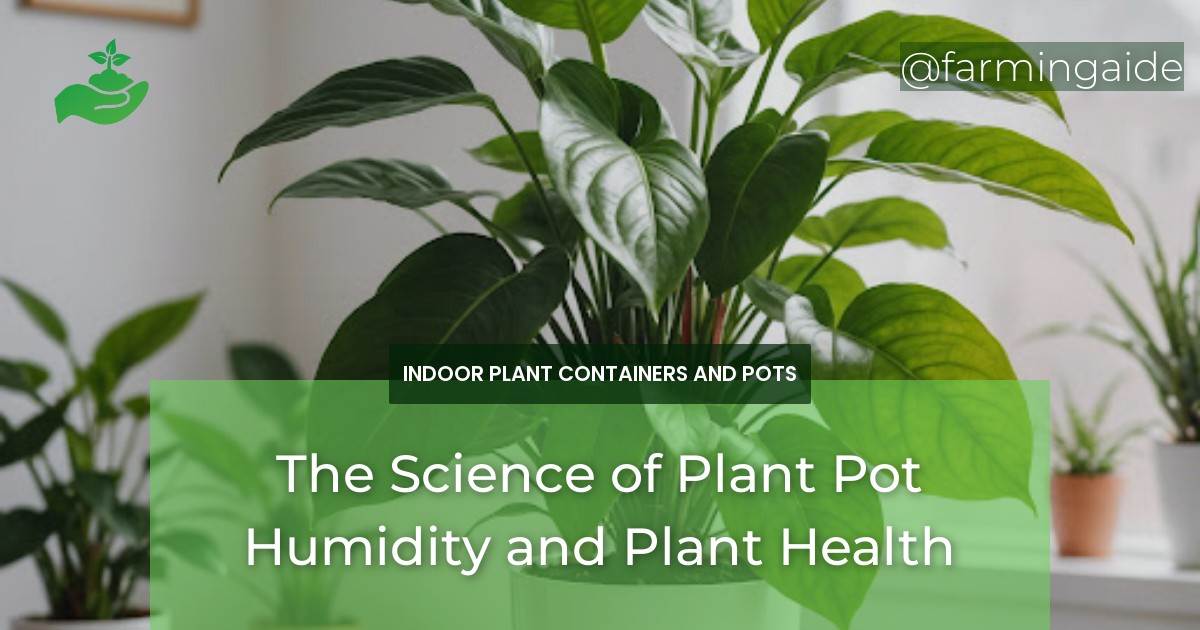When it comes to indoor plant care, one crucial aspect that’s often overlooked is plant pot humidity. While it may seem like a minor detail, the humidity level in your plant pot can significantly impact your plant’s health and growth. In this article, we’ll delve into the science of plant pot humidity and explore its effects on plant health. We’ll also cover techniques for measuring and controlling pot humidity, common mistakes to avoid, and advanced tips for optimal pot humidity management.
Key Takeaways
- Plant pot humidity significantly affects plant health and growth.
- Ideal humidity levels vary among plant species.
- High and low humidity can have detrimental effects on plant growth.
- Measuring and controlling pot humidity is crucial for optimal plant health.
- Avoid common mistakes like overwatering and ignoring plant-specific humidity needs.
Understanding Plant Pot Humidity
Plant pot humidity refers to the amount of moisture in the air surrounding the plant’s roots and soil. It’s a critical factor in maintaining optimal plant health, as it directly affects the plant’s ability to absorb water and nutrients.
A healthy plant pot should maintain a balance between moisture and air circulation. When the humidity is too high, it can lead to root rot and other problems, while low humidity can cause the soil to dry out quickly.
Definition and Importance of Pot Humidity
Pot humidity is the measure of the amount of water vapor in the air within the plant pot. It’s usually expressed as a percentage, with 0% indicating a complete absence of moisture and 100% representing complete saturation.
Pot humidity is crucial because it affects the plant’s ability to absorb water and nutrients from the soil. When the humidity is optimal, the plant can efficiently absorb the necessary resources, leading to healthy growth and development.
Factors Affecting Pot Humidity
Several factors can influence pot humidity, including:
- Temperature: Higher temperatures can lead to increased evaporation and lower humidity.
- Air circulation: Good air circulation can help maintain optimal humidity levels.
- Soil type: Different soils have varying water-holding capacities, affecting humidity levels.
- Watering frequency: Overwatering can lead to high humidity, while underwatering can result in low humidity.
The Impact of Pot Humidity on Plant Health
The ideal humidity level for plants varies among species, but most plants thrive in a humid environment with a relative humidity (RH) between 40% and 60%.
High humidity can lead to root rot, while low humidity can cause the plant to become stressed, making it more susceptible to disease and pests.
ALSO READ
Ideal Humidity Levels for Different Plants
Here are some general guidelines for ideal humidity levels for different types of plants:
| Plant Type | Ideal Humidity Level |
|---|---|
| Tropical plants (e.g., ferns, peace lilies) | 50-70% |
| Succulents and cacti | 30-50% |
| Flowering plants (e.g., African violets, begonias) | 40-60% |
Effects of High and Low Humidity on Plant Growth
High humidity can lead to:
- Root rot and fungal diseases
- Reduced oxygen availability to roots
- Increased risk of pests and diseases
Low humidity can cause:
- Plant stress and wilting
- Reduced growth and development
- Increased risk of pests and diseases
Techniques to Measure and Control Pot Humidity
Measuring pot humidity is crucial to maintaining optimal plant health. You can use a hygrometer, a device that measures the relative humidity in the air.
To control pot humidity, you can:
- Use a humidifier or dehumidifier near the plant
- Group plants together to create a microclimate
- Use a tray with pebbles and water to increase humidity
ALSO READ
Tools for Measuring Pot Humidity
There are various tools available to measure pot humidity, including:
- Digital hygrometers
- Analog hygrometers
- Thermohygrometers
Methods to Increase or Decrease Pot Humidity
Here are some methods to adjust pot humidity:
| Method | Increase Humidity | Decrease Humidity |
|---|---|---|
| Grouping plants | ✔ | |
| Using a humidifier | ✔ | |
| Using a dehumidifier | ✔ | |
| Watering frequency | ✔ | ✔ |
Common Mistakes in Managing Pot Humidity
Two common mistakes to avoid when managing pot humidity are:
Overwatering and Its Effects on Humidity
Overwatering can lead to high humidity, causing root rot and other problems. Make sure to check the soil moisture before watering, and avoid getting waterlogged soil.
Ignoring Plant-Specific Humidity Needs
Each plant species has its unique humidity requirements. Ignoring these needs can lead to plant stress and poor growth. Research the specific humidity needs of your plants to ensure optimal care.
Advanced Tips for Optimal Pot Humidity Management
For advanced plant enthusiasts, here are some additional tips for optimal pot humidity management:
Humidity-Regulating Pot Materials
Some plant pots are designed with humidity-regulating materials, such as moisture-absorbing gels or breathable materials. These pots can help maintain optimal humidity levels.
Integrated Environmental Controls for Humidity
Some greenhouses and indoor gardens use integrated environmental controls that monitor and adjust humidity, temperature, and lighting levels. These systems can help create an optimal environment for plant growth.
Conclusion and Best Practices for Pot Humidity Management
In conclusion, plant pot humidity is a critical aspect of indoor plant care. By understanding the importance of humidity, measuring and controlling it, and avoiding common mistakes, you can create an optimal environment for your plants to thrive. Remember to research the specific humidity needs of your plants, and use the techniques outlined in this article to ensure optimal pot humidity management.


